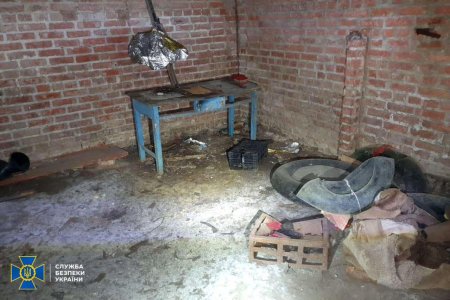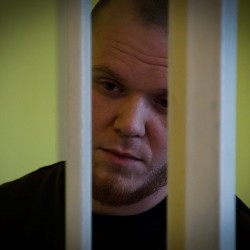![Ілюстративне зображення © Depositphotos [комп’ютер, база даних, інтернет] © Depositphotos](https://khpg.org/files/img/1608823220.jpg)
— If we compare it with other, similar databases, ours has more capabilities, — says one of the creators of the KHPG database (he prefers not to give his name for security reasons). — This is both convenient systematization, reliable storage of large amounts of information, and the ability to extract any data or lists. All this is processed relatively quickly. In addition, it is easy to manage, and it can be customized to your needs.
The database was developed as part of an international project carried out in collaboration with a Swedish NGO Östgruppen för demokrati och mänskliga rättigheter.
Origins
Back in 2014, my interlocutor began to transform the information chaos of the war into an orderly library, where all information about events, people, and places of battles is laid out “on shelves”. Then, he managed to create a nearly comprehensive structured system that included the names of all those killed on both sides of the contact line. It also contained interrogation protocols of soldiers who were captured, all photos and videos related to the ATO (Anti-Terrorist Operation) which appeared on the Internet at least once, a total of 250 different registers... This tool was used not only by human rights activists but also by Ukrainian authorities. Information from this database, for example, helped to defend Vitaliy Markiv in the Supreme Court of Cassation of the Italian Republic, who was accused of the premeditated murder of journalist Andrea Rocchelli.
In Finland, the recent trial of Jan Petrovsky, a former deputy commander in the Russian military unit “Rusych”, who was accused of executing and torturing prisoners, also used this database.
— I gave them everything I had on September 5, 2014 — the day when representatives of “Rusych” ambushed “Aydar” in Schastia. I had photos and videos that appeared on the Internet but later disappeared. Information was collected about all the people who were there, even those who later collected the bodies of the dead. I had a map of how and where the remains of the bodies lay with the results of their identification. A tremendous amount of work was done. Thanks to this, the man received a life sentence.
During a full-scale invasion, it became impossible to continue maintaining such a comprehensive database: too many events, too many killed and wounded, and not enough access to the occupied territories.
The database of missing persons and prisoners, which the Kharkiv Human Rights Protection Group now uses, was created anew but on the same engine. However, information from the old system is regularly used when working with the new one.
— When we are looking for a person, I check whether there is information about him in the old database and manually enter this information into the new one. I often find connections, contacts, relatives, etc. Sometimes, we learn about a person in captivity, but the relatives have not yet contacted us. And it turns out that we already have their data. They have been in the old database since 2014... In addition, there are cases when a person has already been captured, even during the ATO time.
Where does the information come from?
Human rights activists receive data for the database from several sources. First, the KHPG operates a hotline that relatives and friends of missing persons can call. In addition, people come directly to the Kharkiv Human Rights Protection Group reception offices in Kyiv, Kharkiv, and Mykolaiv or contact our lawyers during field trips to the deoccupied territories. Some information is provided by friendly organizations that also receive information about victims.
Secondly, open sources are constantly monitored — social networks, video hosting sites, websites, and Telegram channels. It is not worth mentioning specific names and web addresses because excessive attention often leads to the closure of these resources or the removal of information. This is how many photos and videos from 2014 disappeared from the Internet, which testified to war crimes committed at that time. Fortunately, they remained in the databases of human rights defenders. That is why it is so essential to preserve all finds today.
Thirdly, Ukrainians returning from captivity can provide a lot of information. We carefully try to discover institutions where former prisoners were kept, how many compatriots were there, and whose names they remembered. This difficult conversation sometimes helps to establish the whereabouts of several people at once, about whom nothing was known at home.
In addition, the KHPG constantly exchanges information with state structures — the Coordination Headquarters for the Treatment of Prisoners of War, the National Police, etc.
The data transmitted to us by Russian colleagues — lawyers who have the opportunity to visit defendants or already convicted prisoners directly in their places of detention, is of great help.
All the collected information — names, circumstances of disappearance, addresses, audio and video files related to the person — is safely stored in a well-systematized structure.
Search and filtering
The operator can find the necessary information in the database in seconds. The system allows you to view separately the data of the missing and those who are definitely in captivity and to distinguish civilians, military personnel, and children. You can search by many criteria: by the name of the missing person and the name of the person who contacted human rights activists, date of birth, place, and probable time of disappearance; if it is a military person, by call sign and unit where they served.
For those Ukrainians who are known to be in captivity, the following search criteria are added: place of detention, legal status (whether the law enforcement agencies of the Russian Federation have brought charges against the person, whether there was a trial), criminal article, sentence, sources of information.
Recently, the number of convictions of prisoners of war and civilian prisoners by the so-called courts in the occupied territories and Russia has been noticeably increasing. People who work with the database constantly monitor these trials, adding and updating information.
Why is all this needed?
The database is not a magic wand; by itself, it will not free someone from captivity. This is just a tool, a mechanism that helps store and systematize all the collected information so that people engaged in searching for missing persons can easily navigate massive data sets, establish connections, notice patterns, and draw conclusions.
Thanks to working with such a mechanism, human rights activists can obtain a list by any criterion, analyze where and under what conditions Ukrainians are captured, create a register of all institutions in the Russian Federation and in the temporarily occupied territories where our citizens are held captive, and understand the “logic” of their criminal prosecution by the aggressor state. Lawyers can use such analytics to appeal to the International Criminal Court.
Another, not obvious, function of such tools is historical.
“In many years, such databases will have special value,” says my interlocutor. “After all, thanks to them, it will be possible to create a complete picture of what happened during the war. Testimonies, videos, and photos are being removed from the Internet; site access is lost. All this is stored in a safe place in the database.”
If you are a relative of a person who disappeared under special circumstances, in particular, a prisoner of war or a civilian prisoner, and you need help, call the Missing Persons Hotline at 0-800-20-2402. Calls are free.



